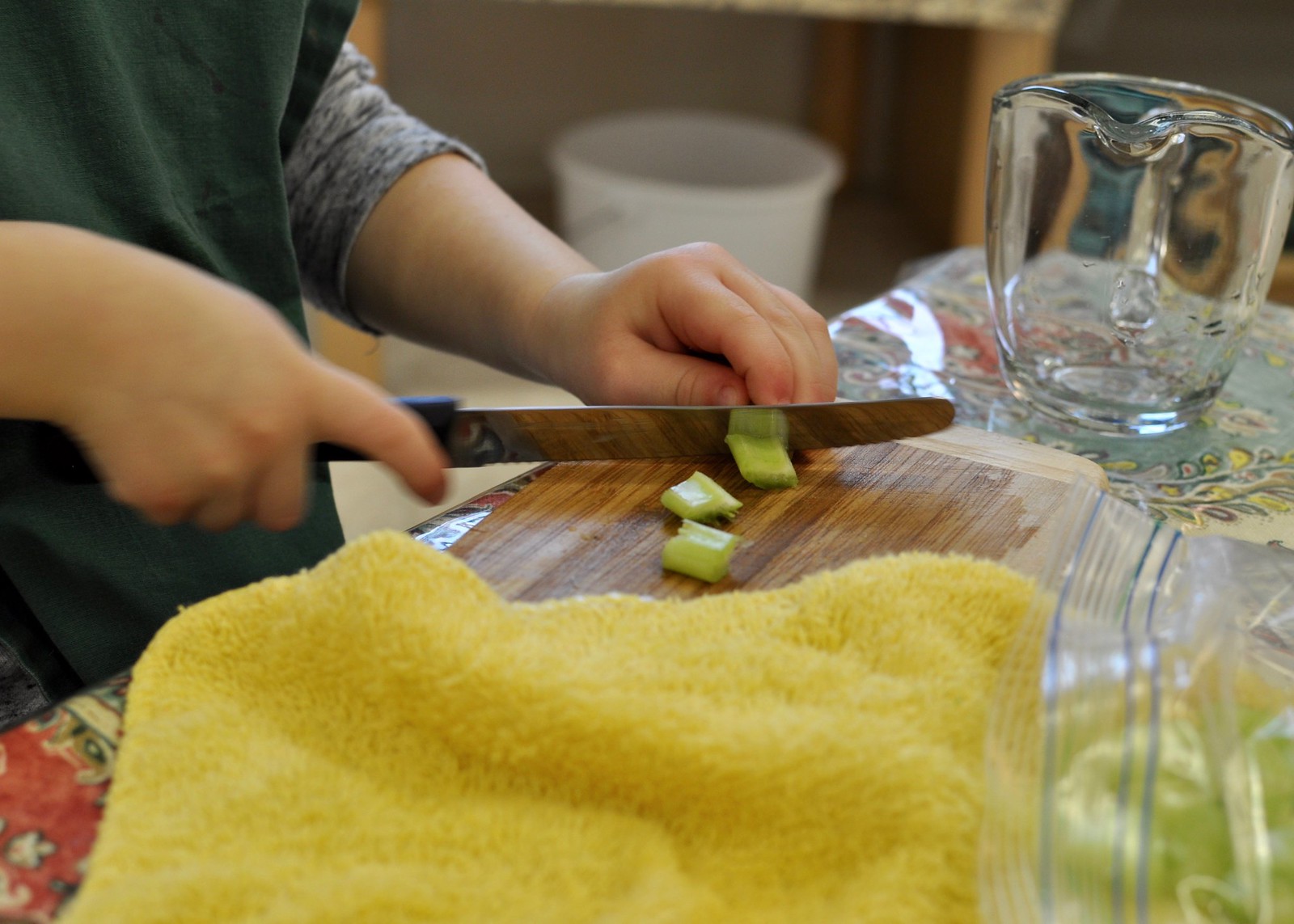Vegetable Cutting
 One of the most impressive sights in the Montessori classroom is observing a young child cut food with a real knife, on a real cutting board, all by himself. For parents, it is sometimes the most cringe-worthy moment, especially if they are viewing a small child complete this task for the first time, never having witnessed this ability before. It is also a testament to the trust we Montessori enthusiasts have in children and their abilities.
One of the most impressive sights in the Montessori classroom is observing a young child cut food with a real knife, on a real cutting board, all by himself. For parents, it is sometimes the most cringe-worthy moment, especially if they are viewing a small child complete this task for the first time, never having witnessed this ability before. It is also a testament to the trust we Montessori enthusiasts have in children and their abilities. 
 Cutting with a knife is a complex skill; the two hands must do two different things at the same time, and careful movement must accompany concentration during the task. One hand must hold steady the celery or other food item while the other holds firmly to the knife. One hand must avoid the fingers of the other hand, the knife must be held and remain perpendicular the entire process through, and finally, just the right amount of pressure must be applied while the sawing motion of cutting is perfected. If it seems complicated, that's because it is! And yet, children as young as 18 months old can be taught this skill safely (though it is more consistently used with 3 - 4-year olds). If you are starting this at home with a toddler, consider using a dull knife and a banana at the beginning.
Cutting with a knife is a complex skill; the two hands must do two different things at the same time, and careful movement must accompany concentration during the task. One hand must hold steady the celery or other food item while the other holds firmly to the knife. One hand must avoid the fingers of the other hand, the knife must be held and remain perpendicular the entire process through, and finally, just the right amount of pressure must be applied while the sawing motion of cutting is perfected. If it seems complicated, that's because it is! And yet, children as young as 18 months old can be taught this skill safely (though it is more consistently used with 3 - 4-year olds). If you are starting this at home with a toddler, consider using a dull knife and a banana at the beginning. In the primary classroom, this work often results in a bag full of green beans, celery, or cucumbers, but the ultimate purpose is obvious; someday, this child will be in his kitchen at home preparing himself a snack, or helping his family make dinner to feed the whole family. There can be a strong sense of responsibility, purpose and community when the end result is to feed oneself and others.
In the primary classroom, this work often results in a bag full of green beans, celery, or cucumbers, but the ultimate purpose is obvious; someday, this child will be in his kitchen at home preparing himself a snack, or helping his family make dinner to feed the whole family. There can be a strong sense of responsibility, purpose and community when the end result is to feed oneself and others.
 There is also the purpose, consistent with so many Montessori primary works, of enhancing concentration through specific order and sequence. At the end of the work, the child has something physical to show for his hard work: a bag of freshly cut vegetables to take home to show his parents. What a pleasure to see such intense concentration result in such tangible results!
There is also the purpose, consistent with so many Montessori primary works, of enhancing concentration through specific order and sequence. At the end of the work, the child has something physical to show for his hard work: a bag of freshly cut vegetables to take home to show his parents. What a pleasure to see such intense concentration result in such tangible results! "The child has to acquire physical independence by being self-sufficient; he must become of independent will be using in freedom his own power of choice; he must become capable of independent thought by working alone without interruption. The child’s development follows a path of successive stages of independence." (The Absorbent Mind, p. 257)
"The child has to acquire physical independence by being self-sufficient; he must become of independent will be using in freedom his own power of choice; he must become capable of independent thought by working alone without interruption. The child’s development follows a path of successive stages of independence." (The Absorbent Mind, p. 257)

